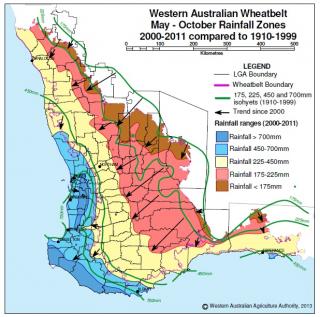Drought in Western Australia
Drought is not an unexpected occurrence for Western Australian farm businesses. Climate data records show that WA, along with the rest of Australia, has regularly been affected by drought throughout history.
In 2008, the CSIRO and Bureau of Meteorology released a report of the implications of climate change for Australia. The report forecast that drought is highly likely to increase in frequency and intensity from 2010 to 2040. From now on, it’s highly likely that exceptionally low rainfall, exceptionally high temperatures and exceptionally low soil moisture levels will occur twice as much in most regions of Australia, and four times as much in the South-West.
From as early as 1909, there have been government concerns over the viability of dryland farming in areas with less than 250mm (10 inches) of annual rainfall or less than 175mm of winter rainfall. Historically, these areas have not had sufficient reliable rainfall to support profitable cropping, with the land being more suitable for pastoral grazing.
As figure 2 shows, rainfall has decreased over time. This has resulted in more areas with less than 175mm winter rainfall and more dryland farm businesses operating in areas which were once deemed unviable for farming. Farming in these areas has been made possible by the use of new and improved farming systems and technology. However, these improvements alone are unlikely to ensure profitable and sustainable farming in these low rainfall areas.

